By AMANDA POPE
Staff reporter
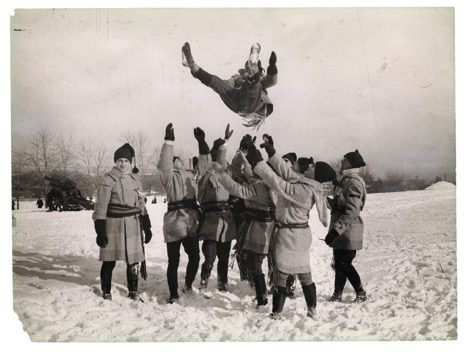
The collection of photos dating from about 1910 until 1990 includes images of major Canadian political events and conflicts, landscapes, sports heroes, candid reportage on the lives of diverse communities and portraits of notable Canadians.
“I can imagine researchers using the archive for projects on everything from who and what was considered newsworthy in Canada during those years to how outsiders – in this case the New York Times – viewed Canada,” said April Lindgren, the research centre’s academic director.
“There are many, many research opportunities for journalism scholars and historians and students. What do the photographs tell us about who wielded power at the time the photos were taken? How were women portrayed in those images? Did Indigenous people appear and if so, how were they presented?”
Denise Birkhofer, the RIC’s collections curator and research centre manager, said the archive is a valuable resource for the university as it increases the representation of Canadian photojournalism within the RIC’s holding.
“We [now] have a vast resource for students, scholars and researchers to look into various issues related to the 20th century in Canada,” Birkhofer said. She said the photographs themselves reveal information about how they were used by the New York Times.
“Photo editors throughout the 20th century were marking on photos with grease pencil to make crop lines and editing notes,” she said. “If you flip the photograph over you have stamps and inscriptions that tell you when photographs were taken or when they were published.”
“Journalists can research where the [photograph] was published or reproduced and find the original article in the New York Times and then you can see the context of how it was used,” Birkhofer said. “For journalism students who are interested in how images are incorporated into journalism and can lead stories, I think that there are endless opportunities for research with this collection.”
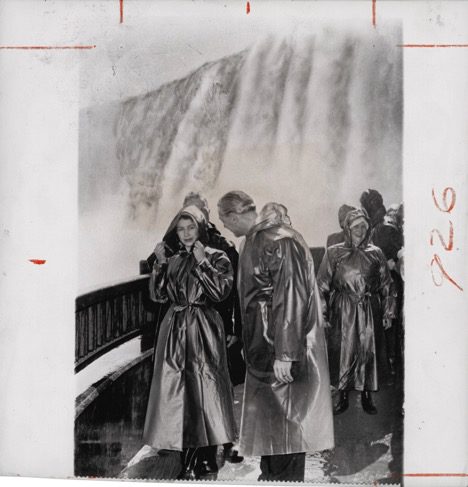
Birkhofer said the images are particularly valuable for what they reveal about how technology has revolutionized photojournalism: “When you are looking at almost a century of photojournalism, you can see the developments and the techniques that were used by photographers over time,” she said.
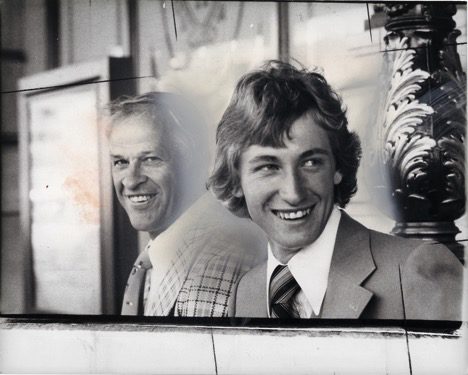
Peter Bregg, who worked as a wire service photographer and is now an instructor at Ryerson’s School of Journalism, has four photographs featured as part of the current exhibition. One of his photographs pulled from the archive and now on display shows then-Canadian Prime Minister Joe Clark waving to crowds alongside Cameroon President Ahmadou Ahidjo as they are driven in an open car through the streets in Yaoundé on July 29, 1979. Bregg, who was working for Canadian Press at the time, said an estimated 50,000 people lined the 15-kilometre route from the airport.
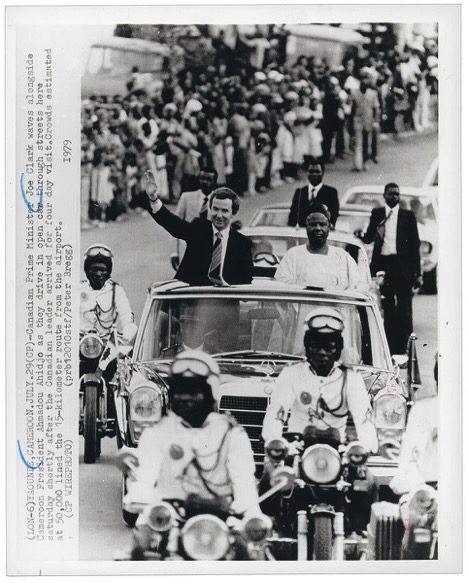
Three more of Bregg’s Canadian Press photographs are featured in the book that accompanies the exhibit, including a 1978 image of youngsters Justin, Sasha and Michel Trudeau peeking from then-Prime Minister Trudeau’s office on Parliament Hill.
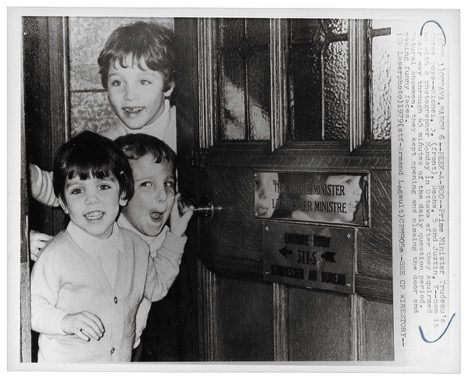
Bregg said technological advancements have improved the quality of photography over time.
“In the past, the film speed was very slow so they had to shoot at a very slow shutter speed and therefore people had to stand still,” Bregg said as he looked at a 1928 photo of divers at the Alberta’s Banff Springs Hotel. “When you look at the pictures from this exhibit, the photos are a lot more stiff and more posed … As time went on, the quality of the photography improved and today the quality of photography is so good.”

“Today, we’re able to take pictures in such difficult circumstances such as in low-light and of fast moving subjects that would be difficult to shoot before the digital era,” he said. “I remember taking hockey pictures 30 years ago and I would get some good ones that were in focus but I would miss a lot because they were out of focus. But today it is easier to take great photographs and be creative.”
The collection is accessible to the public, researchers, scholars and journalists who make an appointment through the Peter Higdon Research Centre. The Faraway Nearby exhibition runs until Dec. 10.
CORRECTION: An earlier version of this story quoted Denise Birkhofer saying, “In the first half of the 20th century, you see the typical black and white solar prints.” In fact Birkhofer said, “In the first half of the 20th century, you see the typical black and white gelatin silver prints.” The RJRC apologizes for the error.
